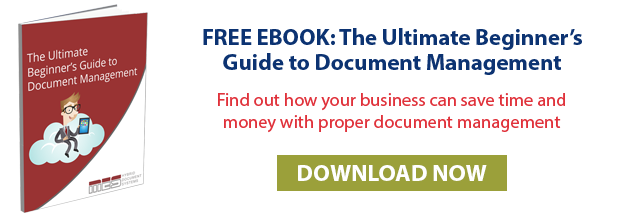
Inefficient document handling isn’t just inconvenient—it’s costly and risky. From misplaced files and data breaches to regulatory penalties and productivity loss, outdated practices can significantly damage your organization. The stakes are especially high for mid-sized enterprises in sectors like healthcare, manufacturing, education, and finance.
With increasing demands for remote collaboration, tighter compliance requirements, and the growing adoption of cloud-based platforms and AI-powered OCR tools, it's time to rethink how your organization manages documents. Adopting the right document management best practices is no longer optional—it’s essential.
This article outlines eight practical and strategic best practices that form the foundation of a sustainable, secure, and efficient digital document management system. Whether you're looking to reduce risk, streamline processes, or support digital transformation, these tips will help bring clarity and control to your document chaos.
1. Develop a Document Management Strategy Tied to Business Goals
A strategy aligned with your organization’s broader goals is the foundation of effective document management best practices. Whether you're striving to improve compliance, boost employee productivity, or enhance data security, your document management strategy should support measurable business outcomes.
For instance, a healthcare provider might prioritize compliance with HIPAA by implementing secure access controls, while a financial firm could focus on fast, traceable document retrieval during audits. In both cases, the strategy must be tailored to industry-specific risks and demands.
Executive sponsorship and cross-department collaboration are also key. Input from HR, legal, IT, and operations ensures the strategy addresses real-world workflows and garners organization-wide support.
2. Implement Version Control and Check-In/Check-Out Protocols
Without proper version control, teams risk working from outdated documents, duplicating efforts, or even overwriting each other’s work. These missteps are not only frustrating—they can also lead to compliance violations and costly errors.
Introducing robust version tracking systems and check-in/check-out protocols is a critical part of digital document management. These tools maintain a history of document changes, track who made edits and when, and ensure only one person can update a file at a time. This eliminates confusion and enhances collaboration, especially in remote or hybrid work environments.
This best practice prevents conflicting edits and ensures audit-ready documentation, delivering immediate ROI through improved accuracy, accountability, and efficiency.
3. Use Metadata and Indexing for Smarter Document Retrieval
A robust digital document management system doesn’t just store files—it helps you find them quickly and accurately. That’s where metadata and consistent indexing come into play.
Metadata refers to the descriptive tags assigned to documents—such as author, department, date, or document type—that enhance search functionality across your repositories. Proper tagging, categorization, and uniform naming conventions are essential for fast retrieval and minimal errors.
For mid-sized enterprises juggling thousands of records across departments, this means employees spend less time hunting for information and more time on value-added work. In regulated industries, metadata also supports more reliable compliance and audit readiness.
4. Set Role-Based Access Controls and Maintain Audit Trails
Data privacy isn’t just a technical issue—it’s a business imperative. Establishing role-based access controls ensures that only authorized personnel can view or modify sensitive documents. This approach not only secures data but also supports internal accountability.
In industries like healthcare or finance, access control plays a vital role in meeting compliance requirements such as HIPAA or PIPEDA. Coupled with detailed audit trails, which log user activity and document history, organizations gain a full picture of who accessed what and when.
By integrating these controls into your document management strategy, you can reduce the risk of data breaches, streamline compliance reporting, and build trust with stakeholders.
5. Automate Workflows for Efficiency and Compliance
Manual document handling is slow, error-prone, and difficult to scale. Mid-sized enterprises can streamline routine tasks like invoice approvals, HR onboarding, and policy distribution by introducing document workflow automation.
Automation minimizes human error, enforces consistency, and accelerates task completion—key benefits in compliance-heavy sectors like healthcare and finance. When integrated with existing ERP or CRM systems, automated workflows also eliminate data silos and reduce administrative overhead.
This proactive step boosts operational efficiency and enhances the organization's ability to meet evolving regulatory standards, making document management best practices both practical and strategic.
6. Establish a Document Retention and Disposal Policy
Knowing which documents to keep, for how long, and when to securely dispose of them is central to records management best practices. Without a clear policy, organizations risk non-compliance, legal exposure, and digital clutter that slows down systems.
A well-defined document lifecycle management policy ensures documents are retained only as long as needed—whether seven years for financial records or indefinitely for medical histories—and disposed of in a way that meets regulatory and privacy standards.
This practice reduces storage costs, limits liability, and improves overall system performance, making it a key component of any modern document management strategy.
7. Leverage Cloud Storage with Backup and Disaster Recovery
Modern businesses need access to documents anytime, anywhere. By adopting cloud-based solutions, organizations gain the scalability and flexibility necessary to support remote work and global collaboration.
In addition to accessibility, reliable backup and disaster recovery capabilities are critical. Automatic backups, redundancy across data centers, and rapid recovery protocols ensure business continuity even in the face of system failures, cyberattacks, or natural disasters.
Cloud storage also integrates seamlessly with digital document management systems, supporting secure access controls, encryption, and compliance with industry regulations, making it a smart, future-ready investment.
8. Provide Ongoing Training and Change Management Support
The success of any document management strategy hinges on user adoption. Even the most advanced system can fall short without proper onboarding and consistent training.
Establishing a structured change management plan ensures employees understand how to use new tools and why they're important. This includes hands-on training sessions, easy-to-access reference materials, and support from internal champions who can drive adoption across departments.
Regular refreshers and updates help reinforce best practices, reduce help desk queries, and maintain system efficiency over time. In short, empowering your team is essential to realizing the full ROI of your document workflow automation and digital document management initiatives.
Turn Best Practices into Business Results: Start with MES Hybrid Document Systems
A well-executed document management strategy is more than just an operational upgrade—it’s a competitive advantage. By implementing these eight document management best practices, your organization can improve efficiency, reduce risk, and ensure compliance across every department.
Now is the time to audit your current systems and identify where inefficiencies and vulnerabilities lie. Whether you're in healthcare, finance, education, or manufacturing, MES Hybrid Document Systems can help you design and deploy a tailored solution built around your unique needs.
Ready to streamline your workflow and protect your data? Contact MES Hybrid Document Systems today for a consultation or to explore our range of document management solutions.

